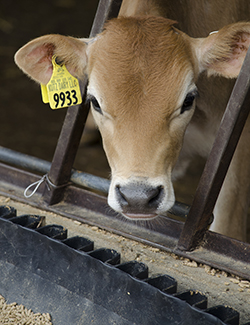 "When it comes to calf health, most of the time it's not the bugs that are the problem," Daryl Nydam, Cornell University, said as a way of introducing his presentation on calf health at the annual meeting of the Professional Dairy Producers of Wisconsin.
"When it comes to calf health, most of the time it's not the bugs that are the problem," Daryl Nydam, Cornell University, said as a way of introducing his presentation on calf health at the annual meeting of the Professional Dairy Producers of Wisconsin.He commented that the biggest areas available for improvement in calf management exist in nutrition and environment. By preparing the calves for bacterial challenges, we give them their best chance.
Of course, this defense begins with providing good-quality colostrum. Based on research, Nydam suggests parity, dry period energy level, immune status of the dam, breed and time from calving to colostrum harvesting have all been shown to affect colostrum quality. To that end, he commented, "Controlled energy diets during the dry period are good for cows and also for high-quality colostrum."
Once the cow calves, it is important to harvest the colostrum quickly and monitor its quality carefully using a colostrometer or Brix refractometer. Even if colostrum quality is good, it doesn't guarantee a successful colostrum program. "Often, if there is enough volume and quality of colostrum, the problem lies in timeliness of delivery and cleanliness," Nydam said.
Overall, what does a good calf program look like?
Nydam suggests calf programs should have a goal of keeping mortality below 5 percent and treatment below 25 percent while doubling birth weight by weaning. For farms monitoring serum total protein levels, the goal should be 90 percent of calves with a total protein greater than or equal to 5.2 g/dL.
(c) Hoard's Dairyman Intel 2016
March 28, 2016








